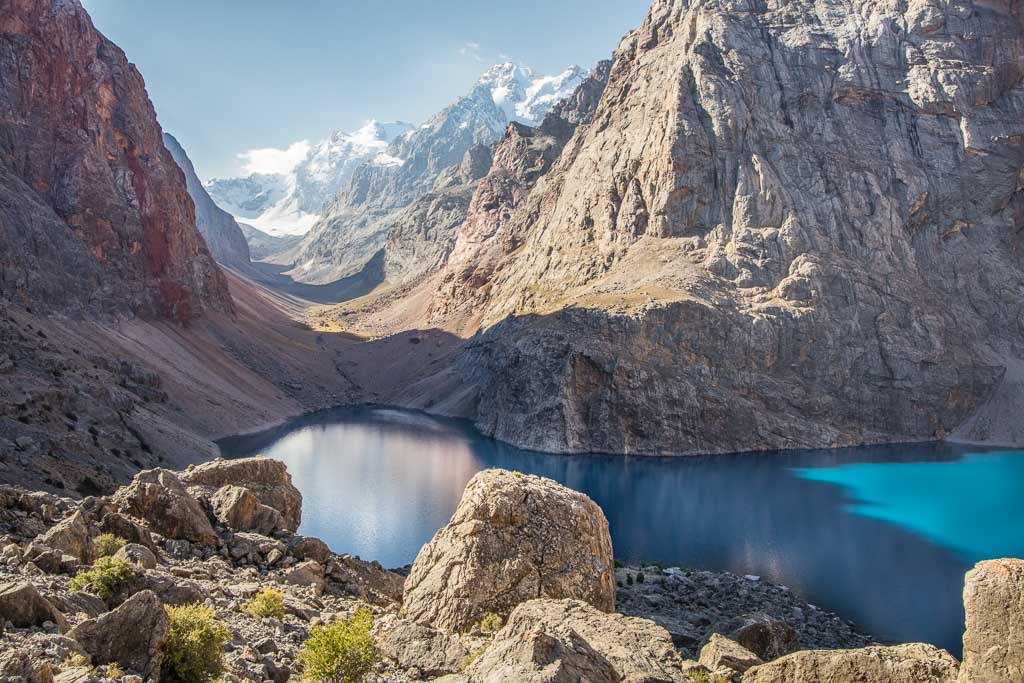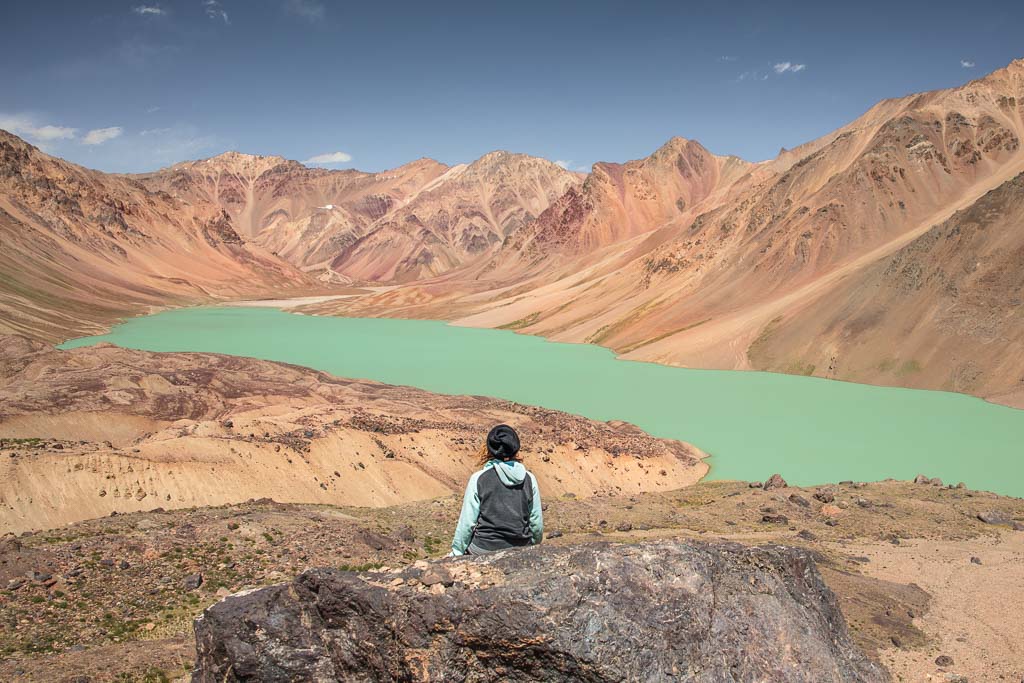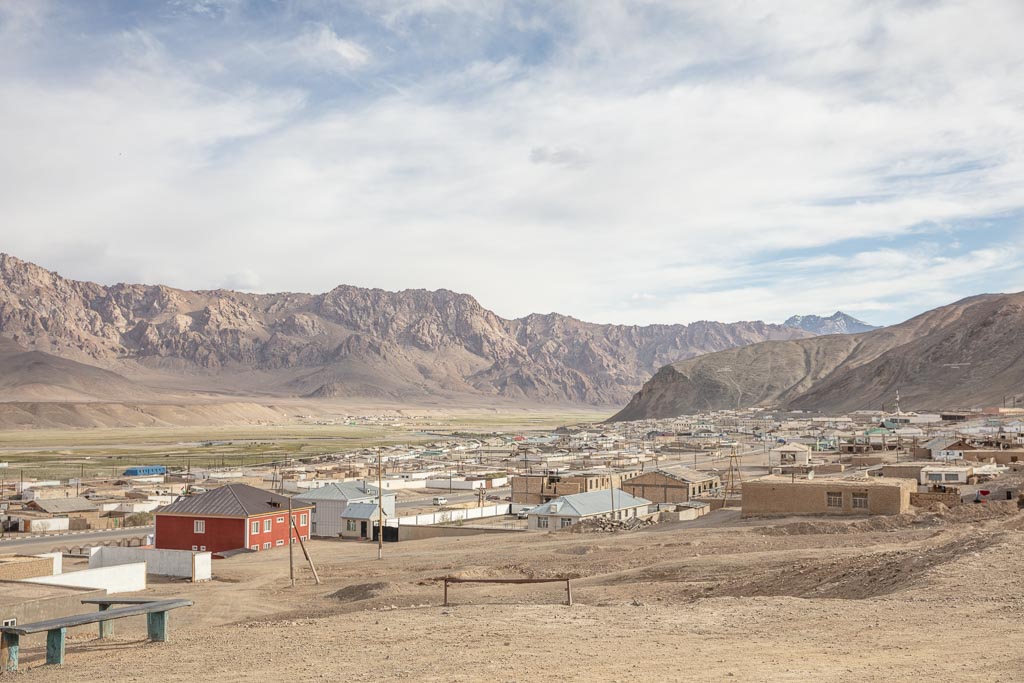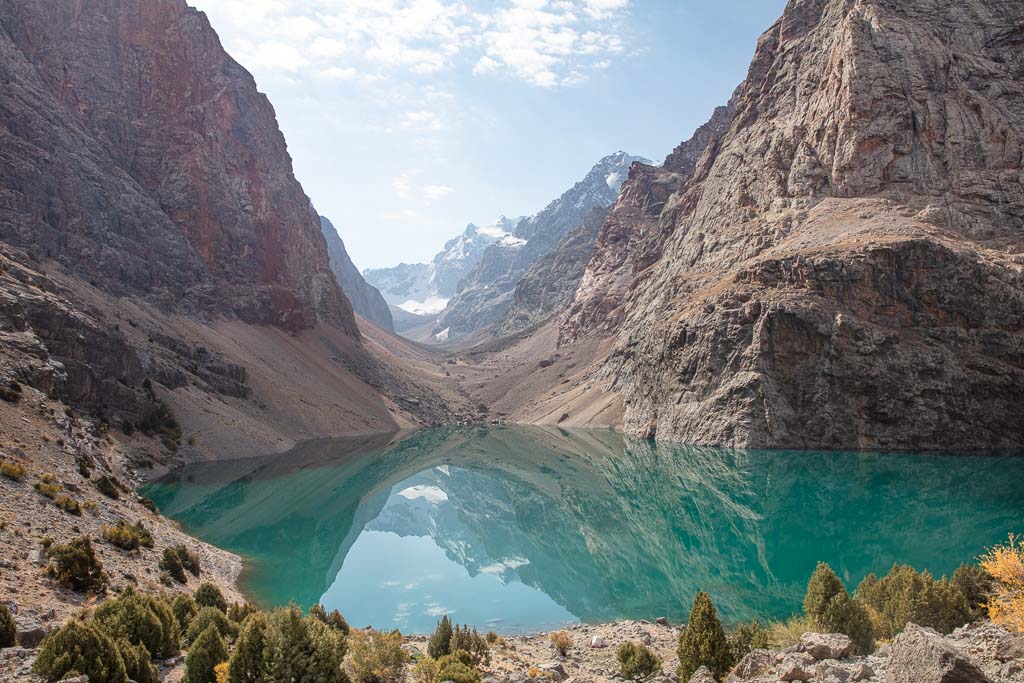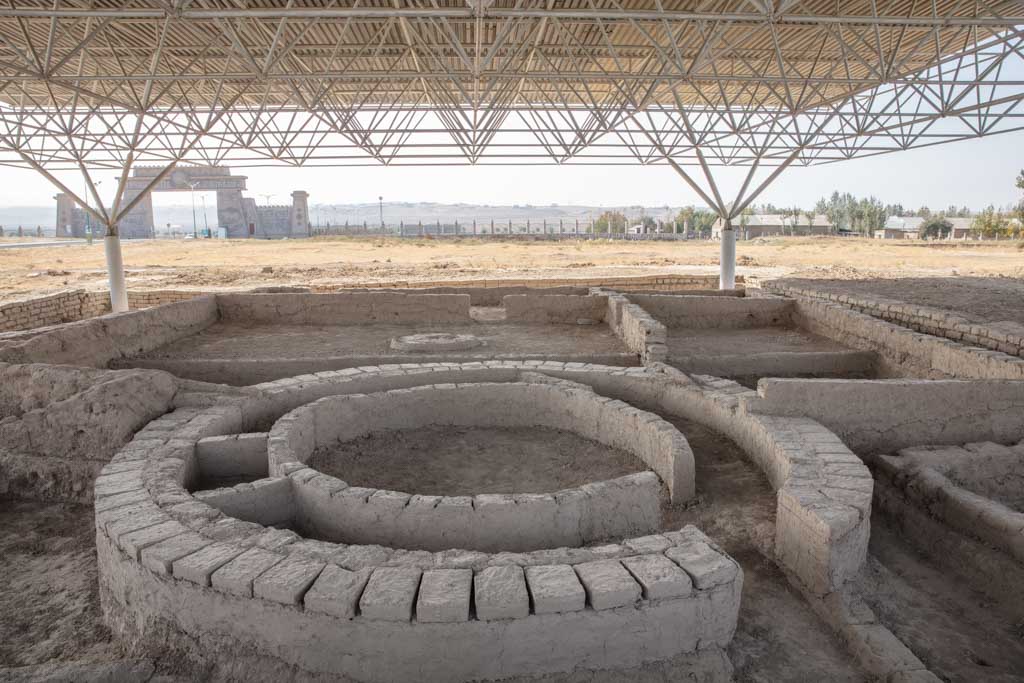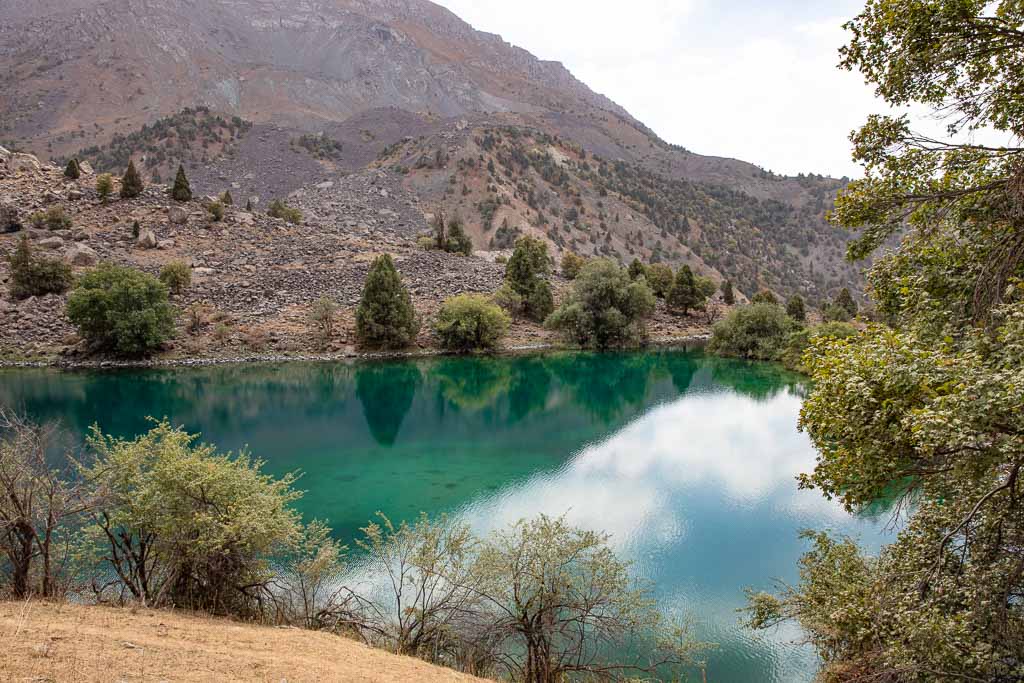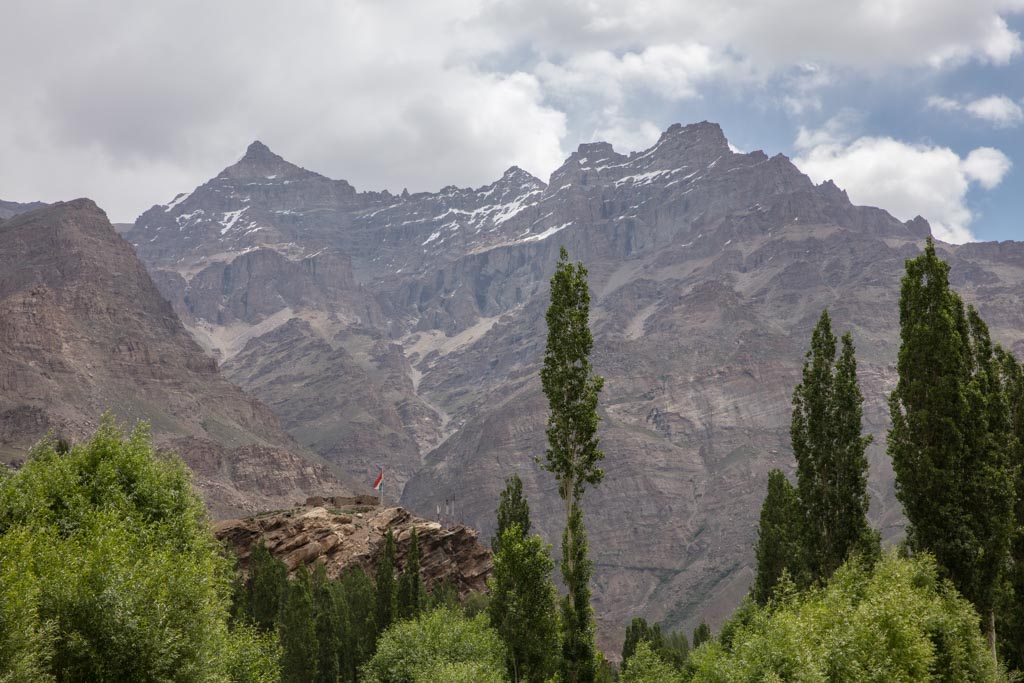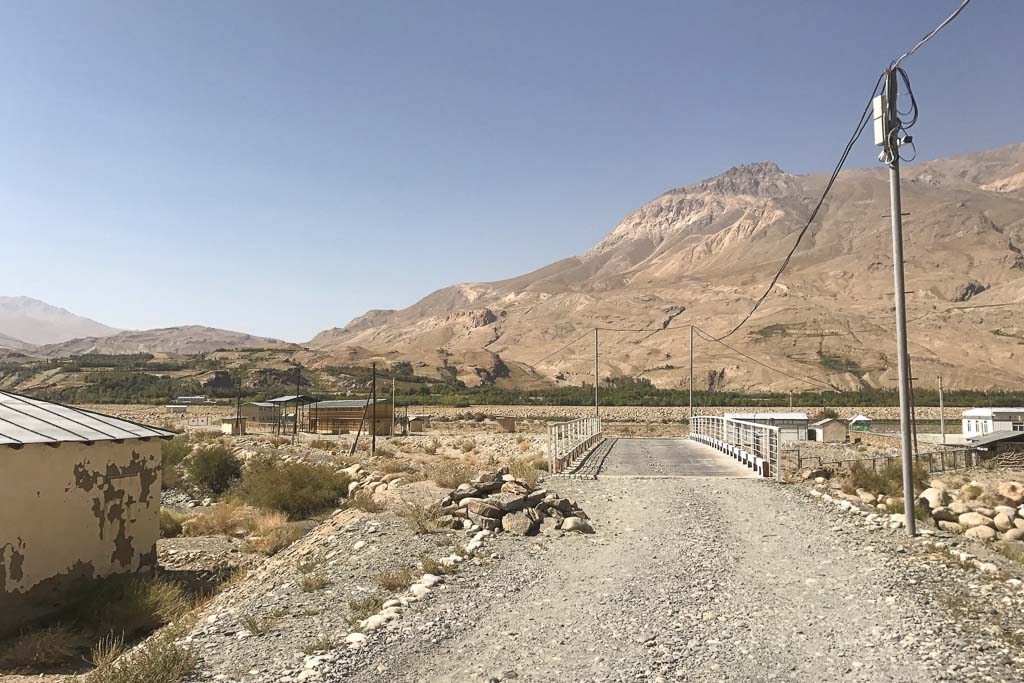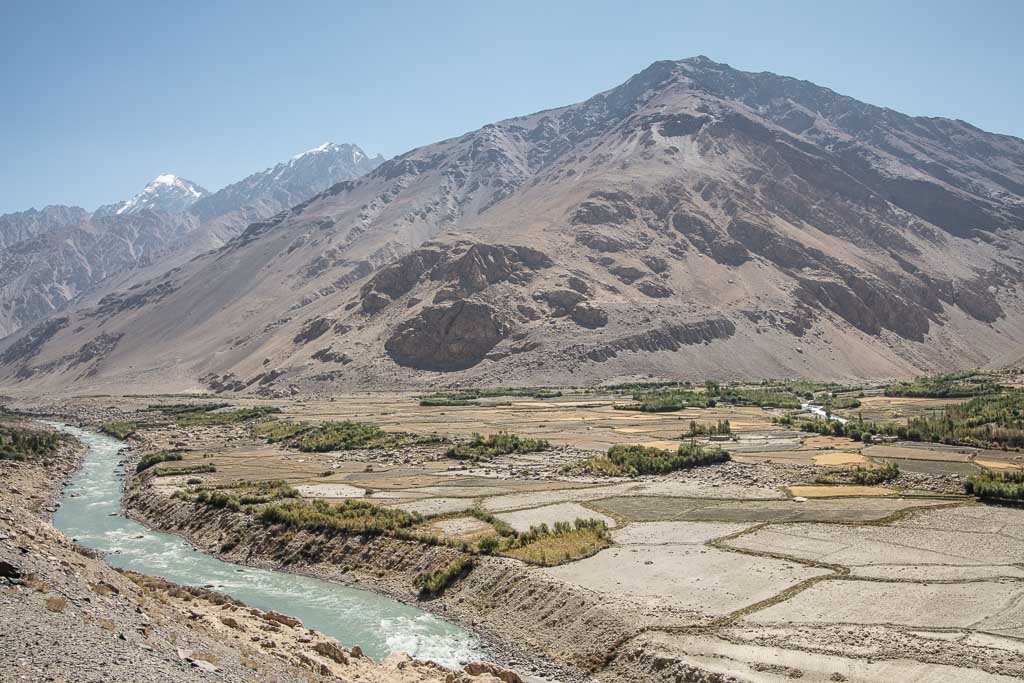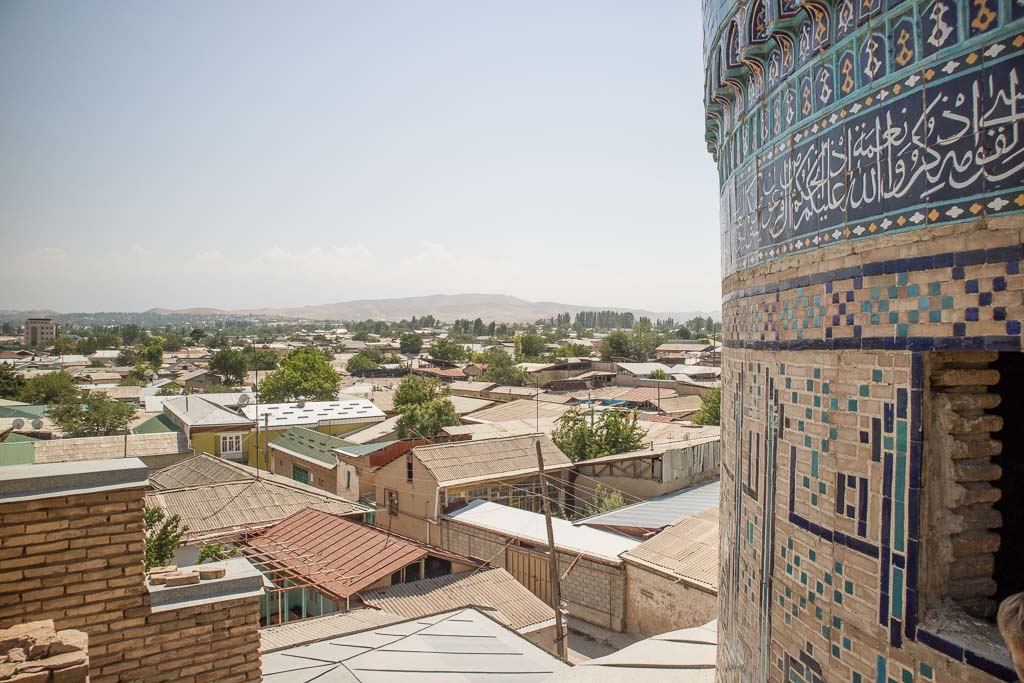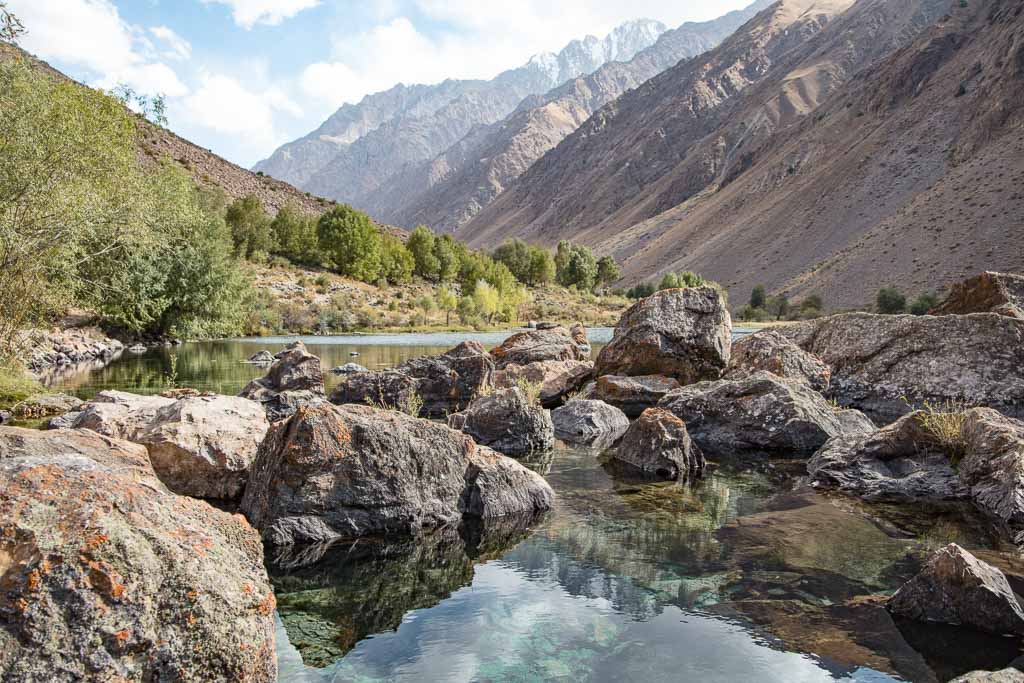Must-Try Tajik Food: Best Food in Tajikistan
Updated April 2024, Must-Try Tajik Food: Best Food in Tajikistan was originally published in September 2022
Starting to plan your trip to Tajikistan and wondering just what the heck they even eat there? I wondered the same before my first trip many years ago, so that’s why after about 10 or so visits I’ve finally put together this post on Tajik food.
Need Travel Insurance and Evacuation Services for Tajikistan?
Start shopping for travel insurance plans over at IATI Insurance. Readers of the Adventures of Nicole get a 5% discount off your plan.
The Adventures of Nicole partners with Global Rescue to offer the world’s leading medical evacuation and security advisory services. To travel with peace of mind, shop evacuation coverage at Global Rescue.
A Bit About Tajik Cuisine
Information about Tajik cuisine and dishes are scarce, to say the least. After many years of going back and forth to Tajikistan, I come across at least one new Tajik dish (new to me, anyway) every time I go back.
Tajikistan does have a varied cuisine that differs greatly from one side of the country to the other. In the western regions of Dushanbe, Sughd, and Khatlon Tajik food tends to blend more herbs, spices, and vegetables into their local dishes, meanwhile heading east into the High Pamir, food becomes much more meat and dairy-centric.
Tajik cuisine has been heavily influenced by other cultures, being one of the nations that sat along the greater Silk Road. From Iran to China, Russia to Afghanistan, and just about everywhere in between, many of these cultures situated along the Silk Road have left their mark on Tajikistan’s cooking. Though with that said, Tajik cuisine does very much have its own character and flavor.
So, I’ve included dishes that are inherently Tajik in this Tajik food post while also including other dishes popular in the country hailing from neighboring nations.
Tajik Dishes to Try
Qurutob
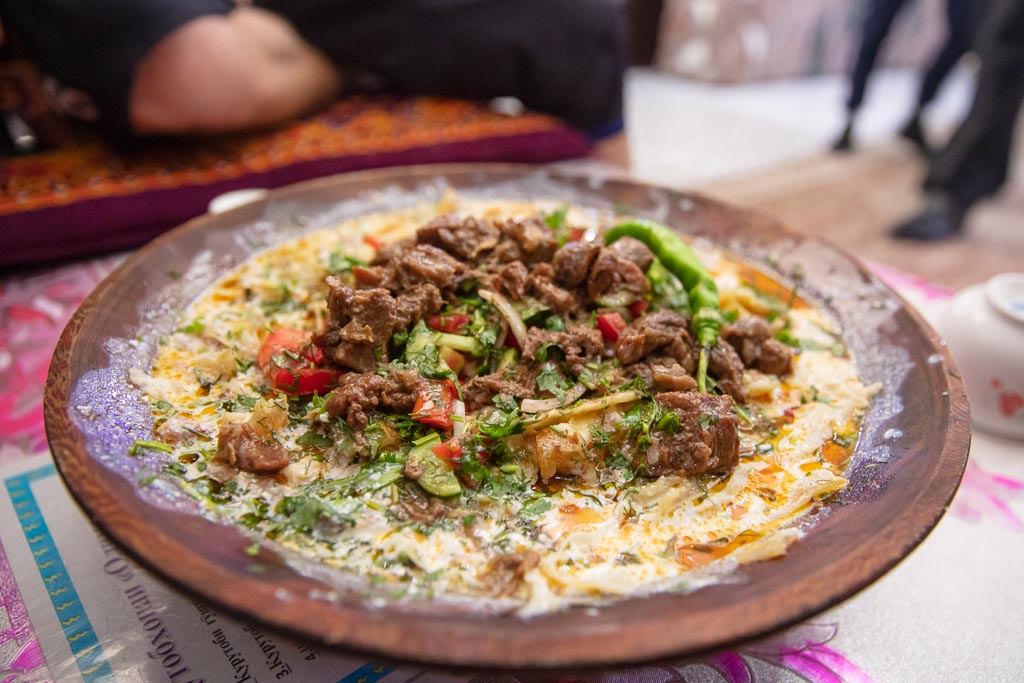
Qurutob, also spelled Kurutob is one of Tajikistan’s most recognizable dishes as it is uniquely Tajik, in fact, it’s regarded as a national dish. Qurutob originally hails from the Dushanbe region with most of my Tajik friends insisting that the best qurutob in the entire country is found in the capital city.
So what is qurutob?
Qurutob means qurut water in Tajik. It owes its name to qurut which are salty dried yogurt balls found throughout Central Asia as a popular snack food.
The traditional dish of qurutob starts with a thin and flakey fatir bread placed inside of a wooden bowl called a tabaq which is a big round shallow bowl made from the wood of a walnut or planar tree. The main feature of the qurutob is the cheesy-yogurt sauce that the fatir is covered in, a slurry made by mixing qurut and water.
Atop the break and yogurt concoction, you’ll find a healthy heaping of chopped tomatoes, cucumbers, sauteed onions, cilantro, and parsley, along with a hot green chili on the side. Many qurutob restaurants serve qurutob with a serving beef or mutton on top.
Traditionally qurutob is eaten out of a communal tabaq with the hands, but most restaurants will provide spoons once they figure out that you’re foreign.
Where to find qurutob: Regarded as the best of the best, Qurutob Olim in Dushanbe is the place to go to try the delicious yogurty dish.
Shakharob

Translating out to sweet water, shakharob isn’t exactly sweet, but it is delicious.
Shakharob comes in two different forms I’ve found when ordering it in restaurants, one version being more like a salad, and the other featuring yogurt and being very similar to qurutob.
The non-dairy version
I’ve ordered shakharob in numerous restaurants to be served a salad pretty much identical to Uzbek achichuk, so I’m led to believe that this is the most common version. It simply is a salad consisting of sliced tomato, chopped cucumber, and sliced onions. The salad pairs perfectly with a skewer of shashlik.
The dairy version
This version of shakharob is almost the same as qurutob. It always consists of a cheesy base comprised of qurut and water, mixed with chopped tomato, onion, and cucumber. Sometimes it will include fatir bread torn up into strips.
Where to get shakharob: Ask for shakharob as a side when ordering at most restaurants in Tajikistan and typically they will have some. If you want to see which type they serve, ask ba-qurut (with qurut) or bay-qurut (without qurut).
Oshi Palov
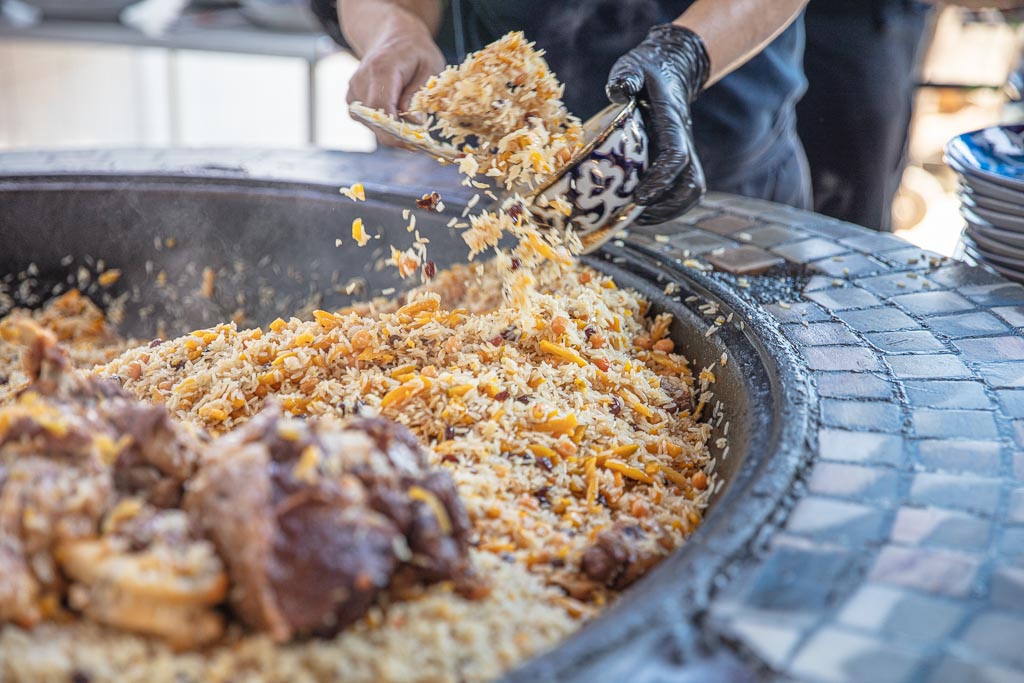
Oshi Palov is found throughout Tajikistan and is also regarded as the national dish and is commonly referred to as just plov or osh. Plov is not distinctly Tajik as the dish is found throughout Central Asia with Uzbekistan also considering it their national dish. However, with that said regions and even cities and villages will have their own version of plov.
Plov is a fried rice dish cooked in a qazan (a large wok) that typically includes beef or mutton, roasted garlic, onion, shredded carrots, and sometimes chickpeas and raisins. Tajik oshi palov will typically be spiced with cumin, salt, and pepper.
Particular places of interest known widely throughout the country for their plov are Panjakent, Khujand, and Isfara, but know that pretty much everyone will boast a relative who makes the best plov bar none. Panjakent Plov is probably the most spoken about plov in Tajikistan, owing to its inclusion of locally grown yellow carrots.
Where to get oshi palov: Rock up to just about any chaikhana in Tajikistan and ask for plov, they’ll surely have it. Special places to try plov include the Panjakent Bazaar, Khujand Bazaar, Toqi Restaurant or Bukharo Restaurant in Dushanbe, Naan Melaan in Khorog.
Javari
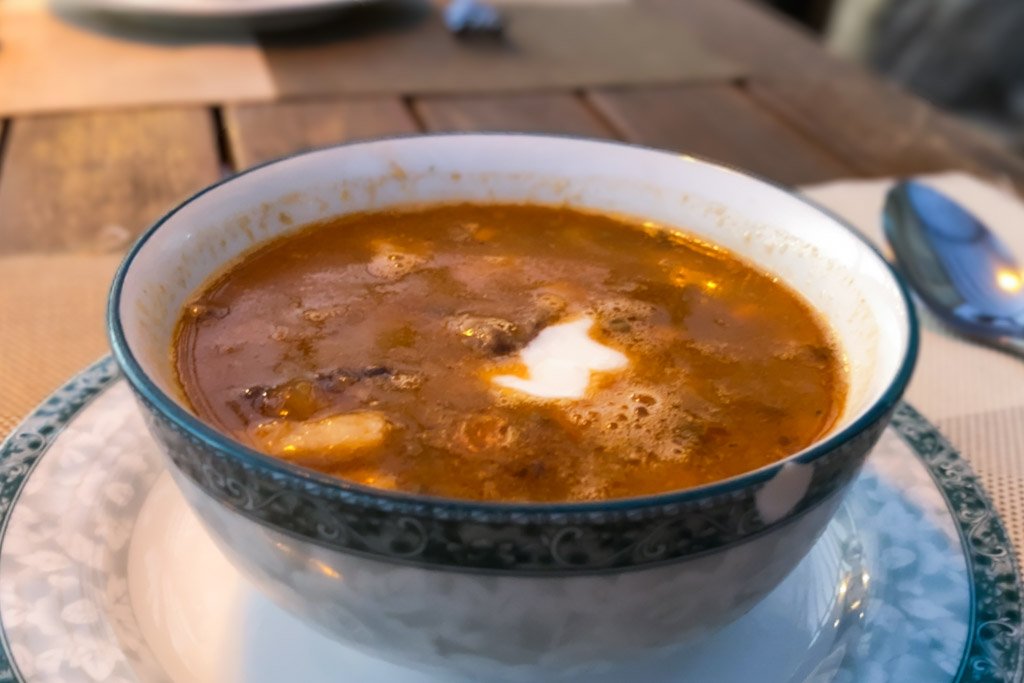
Hailing from Khujand, javari is a soup you probably won’t find outside of Tajikistan. Javari is made from a locally grown pulse called javari that is unique to the Khujand area and not found anywhere else. The soup also features sliced onions and carrots, beef, and mung beans.
To be honest, this is one of my favorite soups in all of Tajikistan, so if you happen to be in the Khujand area make sure not to miss it.
Where to get javari: Restaurant Zaytun in Khujand is known for its javari but you can find it on many menus in the city. If you are in Dushanbe and want to try it, head to Foreli Restaurant.
Gusfand i Tanoori
Gusfand i Tanoori is a lamb shank spiced and slathered in olive oil before being cooked in a tanoor, a Tajik clay oven made for baking and cooking (more or less the same as a tandoor in several other countries). A lamb shank is taken and rubbed with priprava (spice mixture of cumin, coriander, salt, black pepper, and chili pepper) before being cooked to perfection in the tanoor.
Where to try gusfand i tanoori: I’ve personally had the best gusfand i tanoori when popping into random unnamed roadside chaikhanas when traveling in Khatlon and Sughd regions.
Osh i Troosh
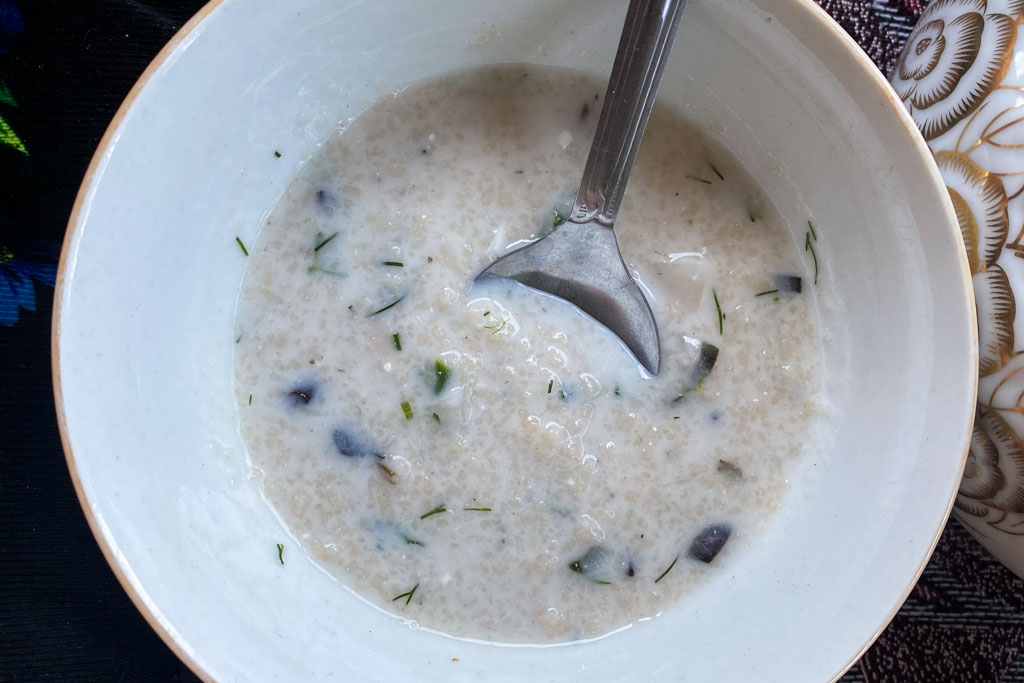
Osh i troosh is a special dish that can only be found in one place in Tajikistan, in a small village by the name of Vin located in the Fann Mountains. It is a soup made of a kefir-yogurt base with semolina-like pasta, and locally grown herbs. The word troosh means sour in Tajik, a fitting name for the tangy starter.
I came across Osh i troosh by chance on my latest visit to Tajikistan while trekking in the Fanns with a tour group I had arranged. Members of our team were originally from Vin and invited us to stay in their family home for a night as we made our way down Igrok Pass to the Archamaidan Valley. As a starter to the massive family meal we got to be part of, we were brought bowls of the yogurt-based soup and were pleasantly surprised with its combination of flavors.
Where to get osh i troosh: The only place to try osh i troosh is in the village of Vin. There are no restaurants or chaikhanas here, so you would need to be invited by a local to try some in their home (which wouldn’t be an impossible feat given the friendly nature of the people there).
Yak Milk Ice Cream
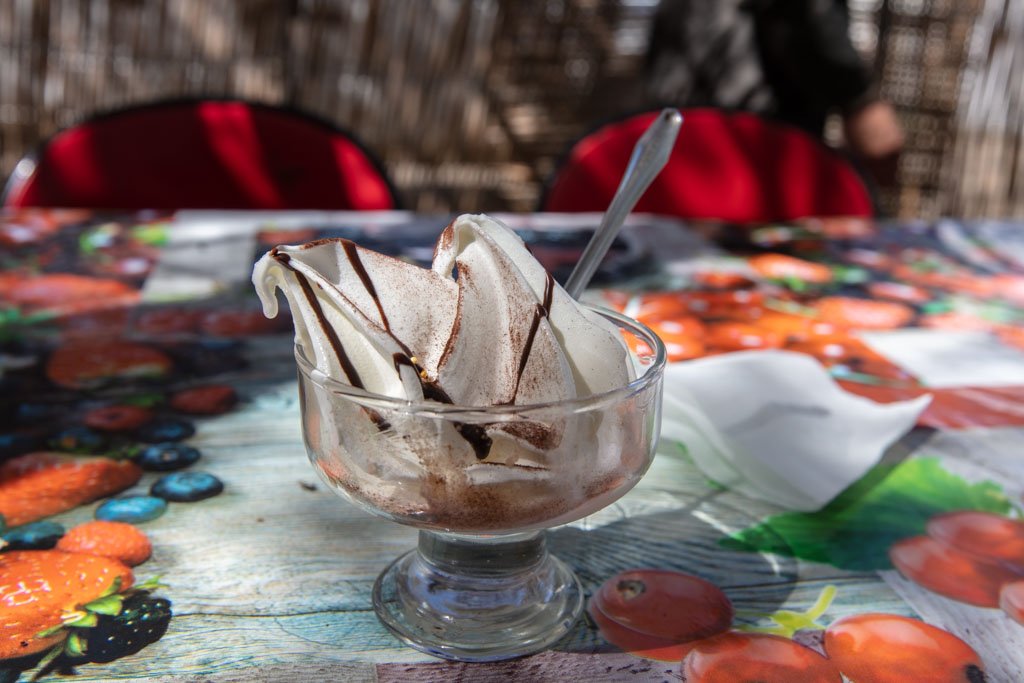
On the backside of the shipping container housing the Megafon shop in the Murghab Bazaar is an outdoor ice cream parlor open only in the summer months. Their specialty? Yak milk ice cream.
Yak milk ice cream is quite delicious, but it’s not wildly different from ice cream made with typical cow dairy.
Where to get yak milk ice cream: At the Murghab Bazaar.
Shorbo Zardalu
Shorbo is the word for soup in Tajik, while zardalu is the word meaning apricot. This apricot-based soup originally comes from the Pamir region, though it is quite difficult to come by. It is comprised of dried apricots, red lentils, onion, carrots, cumin, salt, and pepper.
Where to get shorbo zardalu: Your best bet is to make some local Pamiri friends and just ask around if anyone is making some by chance. Personally, I’ve never seen it on a menu anywhere.
Noshkhukhpa
Noshkhukhpa is another Pamiri apricot-based soup, albeit this one is a bit sweeter than Shorbo zardalu. This version combines dried apricots boiled in water and mixed with flour to thicken. Some will add sugar to make the soup even sweeter.
Where to get noshkhukhpa: Much like shorbo zardalu, noshkhukhpa can be hard to find, so again, you’ll probably have the best luck if asking around amongst Pamiris.
Galupsi

Galupsi is stuffed pepper soup and is among my all-time favorite dishes in Tajikistan. Green bell peppers are taken and stuffed with a combination of rice and beef (or lamb) spiced with priprava and simmered in a perfectly spiced soup broth that infuses the skin of the peppers and consists of onions, tomatoes, carrots, and potatoes.
Where to get galupsi: The best galupsi I’ve ever had has been whipped up by the wife of the owner of the East Pamir Eco Tours Guesthouse in Murghab.
Nakhud Sambusa
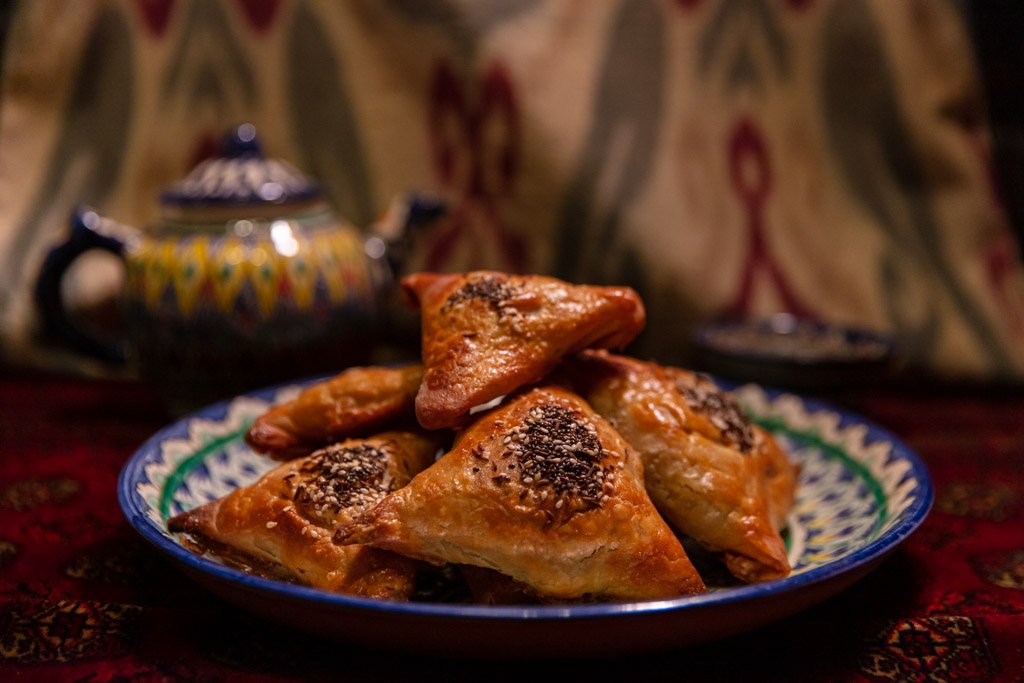
Sambusa, typically called samsa in neighboring countries or samosa in India is a staple in Tajikistan. They are most commonly found in Tajikistan as well as the remainder of Central Asia stuffed with lamb and onions and spiced with cumin. Nakhud sambusa is a uniquely Tajik version that is stuffed with nakhud (chickpeas).
Where to get nakhud sambusa: Meregon Bazaar (Dushanbe), Panjakent Bazaar.
Yak Kabob
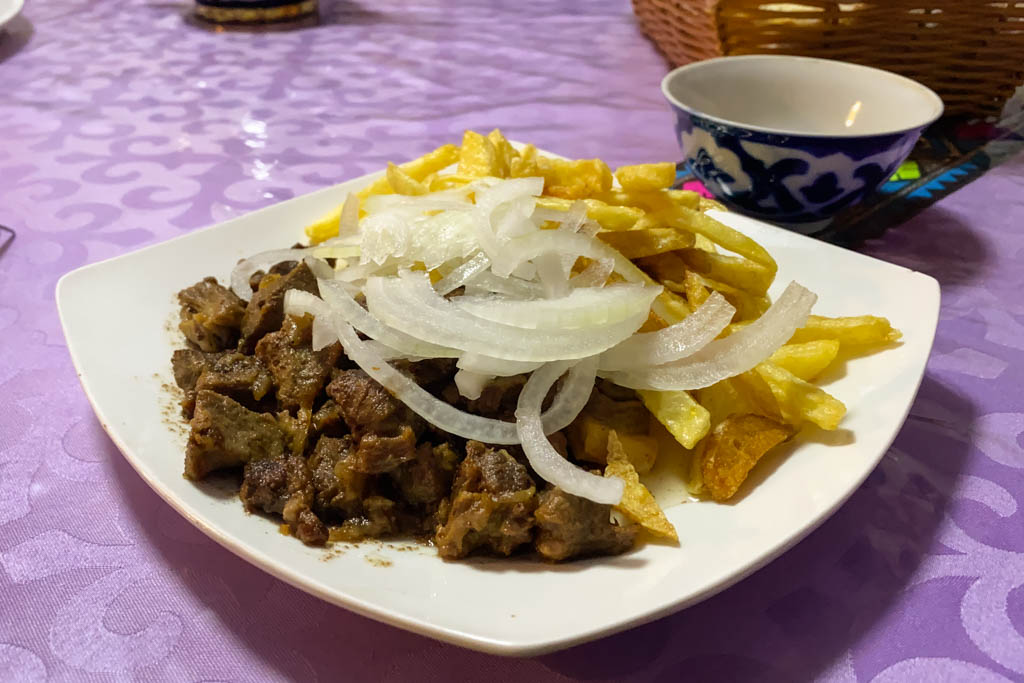
In the east of Tajikistan high up on the Murghab Plateau, you’ll find a plethora of yaks roving around. They’re commonly kept as livestock for the people that call the high Pamir home. So it should come as no surprise that they are on occasion eaten.
Similar in taste to beef, yak is best served grilled alongside a helping of salad or fried potatoes.
Where to get yak kabob: I happened across yak kabob by doing what I do best and asking dumb questions. I’d asked a friend in Murghab if it was common to eat yak and he said yes. Later that evening he surprised me by getting some yak meat from a friend who had recently slaughtered one of their animals and brought it to the Pamir Hotel in Murghab for preparation.
Piyoz va Nakhud
Meaning onions and chickpeas, piyoz va nakhud is a lovely and hearty stew. The stew also incorporates garlic, tomatoes, priprava, and paprika.
Where to get piyoz va nakhud: You’ll be most likely to find piyoz va nakhud in chaikhanas serving up taomhoi milliy (national foods).
Shirchoi
A breakfast staple in the Pamirs (especially the East Pamir), shirchoi is simply tea, milk, butter, and salt. Most will tear up pieces of bread and soak them in the shirchoi. Shirchoi is an acquired taste and most foreigners don’t seem to like it at first.
For those that want something sweet and not savory at breakfast, you could try to request it without salt that way you can add sugar to it.
Where to get shirchoi: The most likely place you’ll try shirchoi is for breakfast when staying at homestays in the Pamir.
Mastoba

While not entirely native to Tajikistan as there is a version called mastova served in Uzbekistan, Tajik mastoba is a popular soup dish that can be found in chaikhanas. Mastoba typically consists of meat, rice, vegetables (onions, garlic, peppers, and potato), and herbs. It’s commonly served with a dollop of katyk (a yogurt-like topping).
Where to get mastoba: Chaikhana Rohat and Foreli Restaurant, both in Dushanbe, serve up a good mastoba, but it’s commonly found on menus of restaurants serving national cuisine all over the country.
Halvaitar
Halvaitar is one of Tajikistan’s most famous dessert dishes. It’s quite simple and is influenced by the Middle East. It simply is a mixture of flour and mutton fat, topped with syrup and sometimes nuts.
Common Dishes in Tajikistan and Central Asia
Since pan-Central Asian dishes are just as common, if not more popular in Tajikistan than their national foods themselves, I’ve decided to include them in this post.
Non
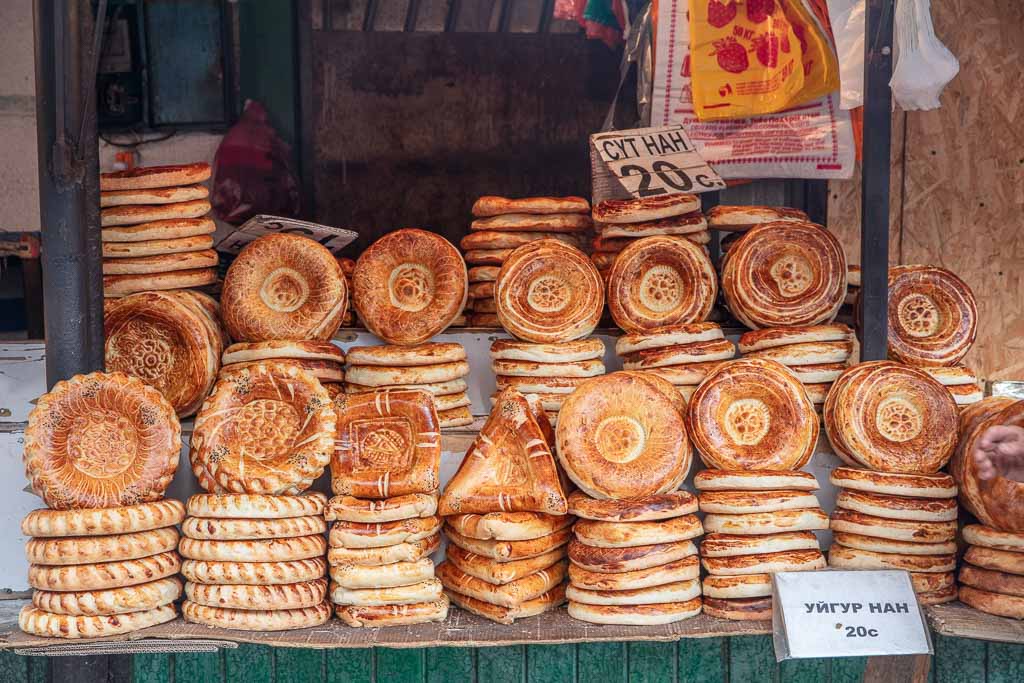
Non is eaten throughout Central Asia, and Tajikistan is probably one of the biggest consumers of it. Non is simply bread, but it comes in many shapes and varieties. My favorites are the flakey fatir bread and a good old-fashioned wheel of kulcha.
The best places to find non are at the noni garm, of course. Noni garm simply means warm bread in Tajik. Noni garms can be found on the street side and in neighborhoods as well as at bazaars.
Shashlik
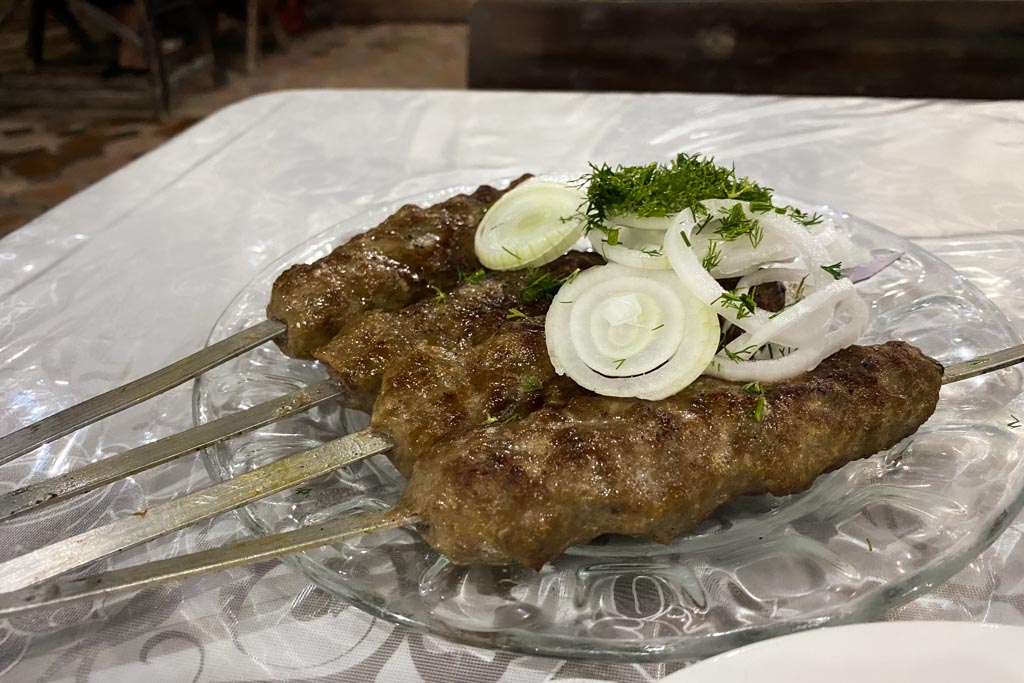
Shashlik is a favorite in Tajikistan as well as the remainder of Central Asia, Russia, and the Caucasus. Essentially it’s meat grilled to perfection on skewers, typically doused in vinegar and served with a heap of sliced white onions and dill. You can find shashlik just about everywhere in Tajikistan but my favorite shashlik spot is Jahan Aka Restaurant in Dushanbe.
Vegetarians can usually request a vegeterianka shashlik in some restaurants and get a skewer of grilled potato, eggplant, pepper, onion, and tomato.
Laghman

Laghman gets a bit confusing in Tajikistan as laghman is the word many Tajiks use to refer to noodles. That said, I’m going to focus on the dish laghman that is thought to have arrived in Central Asia from China, brought by Uyghur and Dungan people who fled over the Tian Shan Mountains to escape persecution.
Laghman comes usually dry or wet, the latter being more of a soupy dish, while the dry version is more like a typical pasta. It consists of hand-pulled noodles, tomatoes, peppers, onion, and beef most commonly. The best place to find laghman is at chaikhanas all around Tajikistan as it’s one of the most popular foods in the country.
Barsok

Barsok is a common appetizer in Uzbekistan, Kyrgyzstan, and Kazakhstan too. They are simply fried little pieces of dough served usually as an appetizer or a side. Barsok are great dipped in jam or kaymak (clotted cream) at breakfast, or as a side to sop up savory sauces and soups.
In Tajikistan, you’ll find barsok sometimes called ozuq. You can ask for them in chaikhanas or at your homestay.
Plov
I included oshi palov in the Tajik food section of this post, but plov is a staple meal all throughout Central Asia. Many cities and villages throughout the Central Asia region have their very own rendition of the dish (and all will claim it’s the best plov), in fact, there are over 60 varieties of plov. Some renowned plovs include Samarkand plov, tuy plov (wedding plov), Qabuli pulao, Tashkent plov, and Panjakent plov.
As plov is a national dish in both Tajiksitan and Uzbekistan and is popular throughout the entire Central Asia region, you’ll find plov just about everywhere you go.
Dimlama

Dimlama is served throughout Central Asia and Tajikistan is no exception. Dimlama is a dish of vegetables and usually, a bit of meat cut into large pieces and layered in a pot and left to simmer in their juices. Common vegetables found in dimlama are onions, potatoes, garlic, tomato, carrots, peppers, and sometimes eggplant.
Dimlama is most commonly served up at homestays and chaikhanas.
Samsa
Nakhud sambusa (Tajiks tend to say sambusa instead of samsa) made the Tajikistan food list, but samsa are a snack food found throughout the entire region and are synonymous with samosa served up in India albeit less spiced.
As mentioned earlier, samsa are packets of dough most commonly found stuffed with onions, beef or mutton, and cumin. They are formed and then baked in a tanoor. Less commonly, you’ll find samsa stuffed with potato, pumpkin, or chicken.
Samsa are easy to come by, just go to any bazaar and you’ll either come across giant tanoors filled with samsa being freshly baked, or they’ll come to you by a seller usually balancing a giant tray of them atop their head.
Manti

Manti or more or less dumplings and are found across all of Central Asia and beyond. Most commonly they are served with a filling of beef or mutton, fat, onions, and cumin but you can find the veggie varieties filled with either pumpkin, potato, or cabbage.
As manti is such a common dish, you’ll find them at most chaikhanas, and don’t be surprised if you’re served them at a homestay.
Qurut

You’ve read about qurutob at the beginning of this Tajik food post, so qurut, one of the main components of the dish had to land on this list.
Qurut is a common roadside and bazaar snack all over Central Asia. It simply is a ball of sour and salty yogurt that has been dried and hardened.
Popular Tajik Drinks
Chai

It would be impossible to visit Tajikistan and not have chai- it’s everywhere and is the most common drink served in the country. Typically ordering chai will be followed with zelony illi chorny? (green or black in Russian) or siyah ë kabud? (black or blue in Tajik- funny enough Tajiks call green tea blue tea). Know that black tea seems to be the most commonly preferred of the two in Tajikistan.
Of course, you’ll find other types of tea in Tajikistan. In the bazaars, you can find all kinds of aromatic spiced chai, and on chaikhana menus, lemon chai is quite popular but do know it usually comes sweetened so you may want to request it bay-shakar (without sugar).
Chalob
Also called dughob, is a fermented dairy drink popular throughout Tajikistan. It consists of chakka, which is similar to kefir and mineral water. It’s commonly served with chopped mint and salt mixed in it.
Compote
Compote is not unique to Tajikistan at all but it is a popular drink throughout the nation. It simply is pieces of fruit boiled in water and stored in a glass jar of sugar syrup.
My favorite variety? Sour cherry compote, which is common to find in Tajikistan, especially in July and August.
Mineral Water
Owing to Tajikistan’s mountainous nature, the country is blessed with countless mountain springs. Because of this, mineral water is pretty much everywhere. So make sure you try it, whether it’s straight from the mountainside or one of the bottled varieties in the dukon (shop).
Have any questions about Tajik Cuisine?
Ask in the comments section below.






